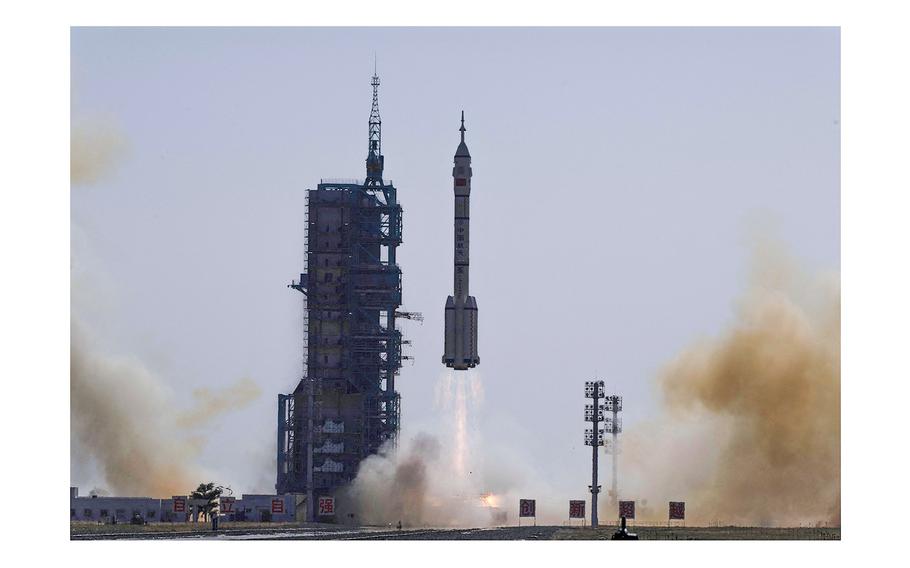
A Long March-2F carrier rocket, carrying the Shenzhou-17 spacecraft and a crew of three astronauts, lifts off from the Jiuquan Satellite Launch Centre in the Gobi desert, in northwest China on Oct. 26, 2023. (Pedro Pardo, AFP/Getty Images/TNS)
WASHINGTON — China is growing its military capabilities in space at a “breathtaking pace” to counter the American satellites in orbit and improve its ability to monitor and target forces on Earth, according to the head of the U.S. Space Command.
America’s top strategic challenger is seeking to develop advanced space weaponry and making advances in satellite meteorology, human spaceflight and robotic space exploration, General Stephen Whiting said during a hearing Thursday of the Senate Armed Services Committee.
Whiting’s warnings, delivered during a hearing on future military budgeting priorities, highlight Washington’s focus on China as its biggest economic and security threat, a geopolitical competition that ramped up under former President Donald Trump and has been sustained by Joe Biden’s administration.
China’s satellite fleet has more than tripled since 2018 to 359 systems, Whiting said in his prepared remarks, adding that some of its newly deployed satellites may be able to function as weapons that can disrupt the orbit of U.S. assets. Beijing is also developing “hypersonic glide vehicles” other advanced space weaponry to overcome traditional missile warning and defense systems, he said.
China “is growing its military space and counterspace capabilities at breathtaking pace to deny American and allied space capabilities when they so choose,” he said.
Most concerning about China’s accelerated emphasis on space weapons, Whiting said, “is the way China has clinically studied us and our dependency on space” and is “rapidly building” programs to threaten the U.S. satellite architecture.
China’s Defense Ministry hit back at the comments, with spokesman Zhang Xiaogang saying at a regular press briefing in Beijing that “the U.S. side is using so-called threats from other nations as an excuse to expand its own military power.”
“We urge the U.S. to stop disseminating false information and stop the arms race in the space,” he said.
China’s intentions are often obscured through so-called dual-use technologies, academic programs with ambiguous research tracks and commercial endeavors that can also enhance military capabilities, Whiting said.
Whiting also focused on Russia, saying the loss of conventional military offensive capabilities because of the war in Ukraine will be hard to restore and force Moscow to be “more reliant on nuclear, cyber, and space capabilities, including disruptive technologies” that may provide “asymmetric pathways to achieve their strategic goals.”
China earlier this week unveiled plans for a major increase in the expected pace of its space missions this year, setting the country on course to be the world’s second-most active launcher, behind only Elon Musk’s SpaceX.
A record 100 Chinese missions are expected in 2024, state media reported recently, up more than 40% from last year.
State-run China Aerospace Science and Technology Corp., its top space contractor, will conduct almost 70 missions and send more than 290 satellites and spacecraft into orbit, according to state broadcaster CCTV.
The Chinese government is also working on a new launch complex in Hainan designed for commercial missions and wants to have its first crewed mission to the moon before 2030.
With assistance from Jing Li and Philip Glamann.
©2024 Bloomberg L.P.
Visit bloomberg.com.
Distributed by Tribune Content Agency, LLC.